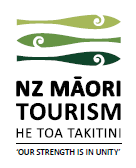Press release from Tourism Industry Aotearoa
More visitor accommodation is the highest priority infrastructure needed to support the future growth of New Zealand’s booming tourism industry, new research has found.
Development of new accommodation would generate more additional tourism impact for New Zealand than any other category of infrastructure, according to the research carried out by Deloitte for Tourism Industry Aotearoa.
The other priority infrastructure types identified by TIA’s National Tourism Infrastructure Assessment are telecommunications, airport facilities, road transport, car parking, toilets, and water and sewerage systems.
The Assessment finds that the tourism industry will need to work closely with central and local government to achieve the required development to close these infrastructure gaps as market forces alone are unlikely to be sufficient.
TIA Chief Executive Chris Roberts says coordinated actions will be required.
“We need smart and active interventions to ensure tourism growth is sustainable, that the industry keeps growing its contribution to New Zealand’s economy and reaches its Tourism 2025 goal of $41 billion annual revenue,” Mr Roberts says.
“The tourism boom is putting pressure on some of our most popular destinations. We need to address this as a country, otherwise we won’t be able to keep growing, the visitor experience could suffer and we’ll lose community support for tourism.”
TIA identified that there was a need for solid evidence on the current state of tourism infrastructure, the desired future state, and where coordinated action needs to be taken to close any gaps.
Supported by a number of industry partners, TIA commissioned Deloitte to undertake the comprehensive National Tourism Infrastructure Assessment.
Surveys, interviews and various data sources were used to assess 20 categories of infrastructure across 31 regions.
“What we really wanted to identify is those infrastructure gaps that have a high tourism impact, and require a great deal of coordination between the public and private sectors. At a national level, seven infrastructure types fall into this category – visitor accommodation, telecommunications, airport facilities, car parking, public toilets, water and sewerage systems, and road transport,” Mr Roberts says.
At a regional level, each region has a different pattern of priorities depending on local circumstances.
Three of the priority areas – car parking, toilets, and water and sewerage systems – are the types of facilities usually provided by local government. As an additional piece of work to the main Assessment, TIA commissioned Deloitte to estimate the scale of need for ‘local and mixed use infrastructure’ – facilities that are used by both residents and visitors.
This gathered information from councils around the country and TIA members on tourism-related infrastructure projects they might be contemplating.
“The list was a real mixed bag of projects big and small, some ready to go, others just ideas. But it served to demonstrate the scale of the need. We have provided the results of that work to the government, and we believe it supports the case for a substantial Tourism Infrastructure Fund to support local projects.
Done well, this fund can address much of the concern for these local and mixed use infrastructure types,” Mr Roberts says.
The other priority infrastructure types – visitor accommodation, telecommunications, airport facilities and road transport – each need further investigation and development of specific approaches to ensure the right investments are made and gaps are closed. TIA will work with the public and private sectors to identify the best way forward.


